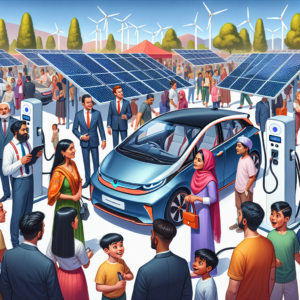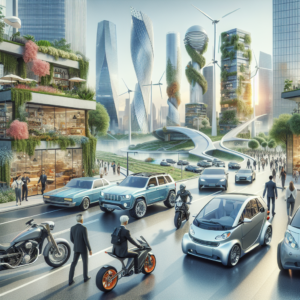Speed Limit Changes: Are We Ready for the Shocking Impact on Safety?

In recent years, many urban areas around the world have begun to implement significant changes to speed limits, aiming to enhance road safety and reduce traffic fatalities. These adjustments have sparked a heated debate among policymakers, traffic safety advocates, and the general public. As cities grapple with the implications of these changes, it is crucial to understand the rationale behind them, analyze their potential impact on safety, and consider the public’s perception of these new regulations. This article delves into the multifaceted aspects of speed limit changes and their implications for urban safety.
Understanding the Rationale Behind Recent Speed Limit Changes in Urban Areas
The rationale behind recent speed limit changes in urban areas primarily stems from a growing recognition of the need to prioritize safety over speed. Urban planners and traffic safety experts argue that lower speed limits can significantly reduce the severity of accidents, particularly in densely populated areas where pedestrians and cyclists are prevalent. Many cities have adopted a “Vision Zero” approach, which aims to eliminate traffic fatalities and serious injuries. This philosophy underscores the belief that no loss of life on the roads is acceptable, prompting municipalities to reevaluate their speed regulations. Additionally, the increasing prevalence of mixed-use developments and the rise of alternative transportation modes, such as biking and walking, have necessitated a shift in how speed limits are determined and enforced.
Analyzing the Correlation Between Speed Limits and Traffic Accident Rates
Research consistently demonstrates a strong correlation between speed limits and traffic accident rates. Studies indicate that higher speeds not only increase the likelihood of accidents but also exacerbate the severity of injuries sustained during collisions. For instance, a pedestrian struck by a vehicle traveling at 40 mph is significantly more likely to suffer fatal injuries compared to one hit at 20 mph. This evidence has prompted many cities to lower speed limits in residential and commercial districts, aiming to create safer environments for all road users. Furthermore, data from jurisdictions that have implemented lower speed limits often reveal a subsequent decline in traffic-related injuries and fatalities, reinforcing the argument for such regulatory changes.
The Role of Public Perception in Accepting New Speed Limit Regulations
Public perception plays a crucial role in the successful implementation of new speed limit regulations. While many individuals recognize the importance of road safety, resistance to change can arise from a variety of factors, including ingrained driving habits and concerns about increased travel times. Effective communication strategies are essential to address these concerns and foster public support for lower speed limits. Educational campaigns that highlight the benefits of reduced speeds, such as improved safety for pedestrians and cyclists, can help shift public attitudes. Additionally, involving community members in the decision-making process can enhance acceptance and compliance with new regulations, as residents are more likely to support initiatives that reflect their values and priorities.
Evaluating the Impact of Speed Limit Changes on Pedestrian and Cyclist Safety
The impact of speed limit changes on pedestrian and cyclist safety is particularly noteworthy. Lower speed limits have been shown to create a more conducive environment for non-motorized road users, encouraging walking and cycling as viable transportation options. As cities strive to reduce their carbon footprints and promote healthier lifestyles, enhancing pedestrian and cyclist safety becomes paramount. Studies indicate that areas with lower speed limits experience fewer accidents involving pedestrians and cyclists, fostering a sense of security that can lead to increased foot and bike traffic. Moreover, the implementation of traffic calming measures, such as speed bumps and raised crosswalks, often accompanies speed limit reductions, further enhancing safety for vulnerable road users.
Case Studies: Cities That Successfully Implemented Speed Limit Revisions
Several cities around the globe have successfully implemented speed limit revisions, serving as models for others to follow. For example, Paris has reduced speed limits to 30 km/h (approximately 18.6 mph) in most of its urban areas, resulting in a notable decrease in traffic fatalities and injuries. Similarly, New York City has seen a significant reduction in pedestrian fatalities since lowering speed limits in key areas. These case studies illustrate that when cities adopt comprehensive strategies that include speed limit changes, public education, and infrastructure improvements, they can achieve substantial gains in road safety. Such examples provide valuable insights for other municipalities considering similar reforms.
Future Directions: Preparing for Ongoing Adjustments in Speed Limit Policies
As urban environments continue to evolve, the need for ongoing adjustments in speed limit policies will become increasingly important. Future directions may include the integration of technology, such as automated speed enforcement systems, to enhance compliance and deter speeding. Additionally, cities will need to remain adaptable, regularly reviewing and updating speed limits based on traffic patterns, accident data, and community feedback. Engaging with stakeholders, including local residents, businesses, and advocacy groups, will be essential for ensuring that speed limit policies reflect the needs and values of the community. Ultimately, a proactive approach to speed limit adjustments will be crucial in fostering safer, more sustainable urban spaces.
In conclusion, the recent changes to speed limits in urban areas represent a significant shift in how cities approach road safety. By understanding the rationale behind these changes and analyzing their impact on traffic accident rates, pedestrian and cyclist safety, and public perception, stakeholders can better navigate the complexities of implementing new regulations. As cities learn from successful case studies and prepare for ongoing adjustments, the ultimate goal remains clear: to create safer, more livable urban environments for all road users. The challenge lies not only in enforcing new speed limits but also in fostering a culture of safety that prioritizes human life over speed.














